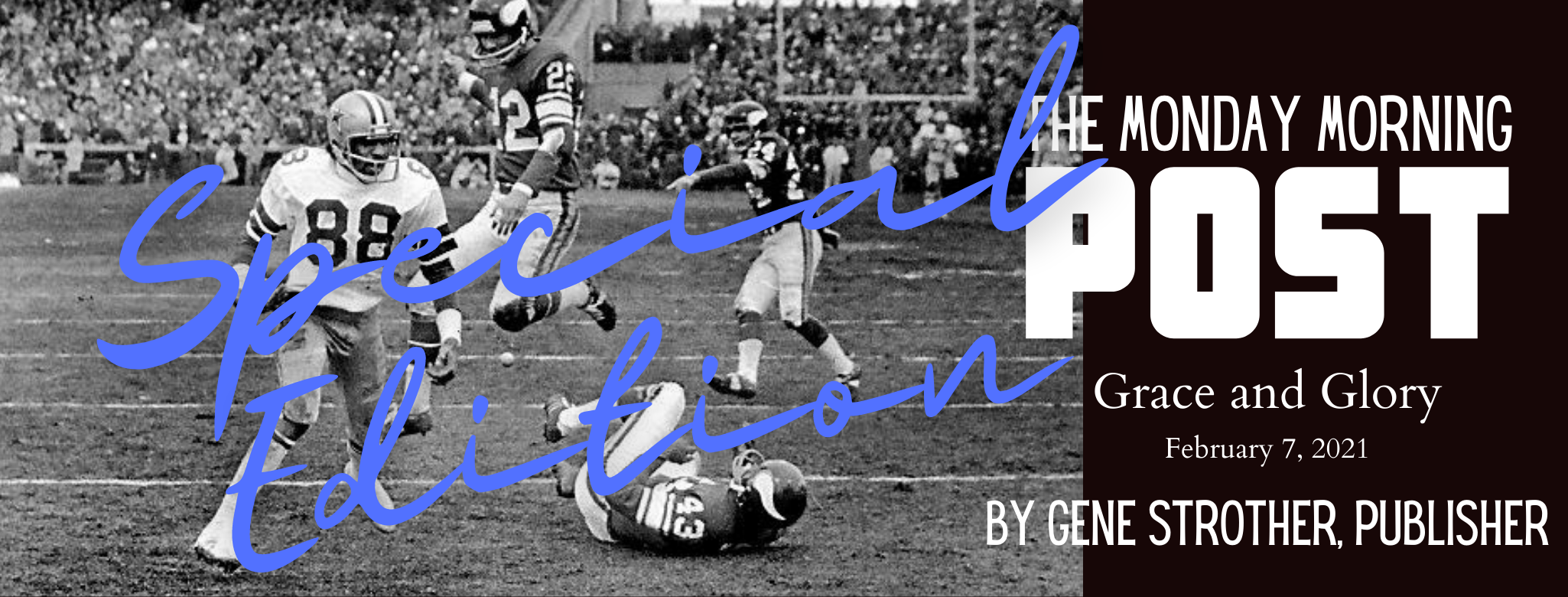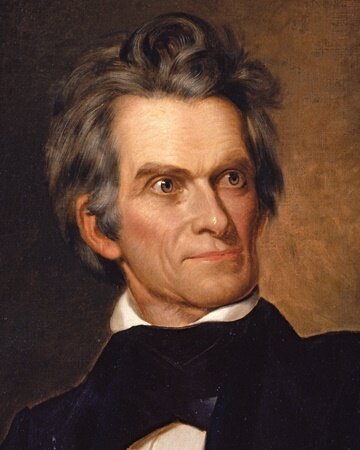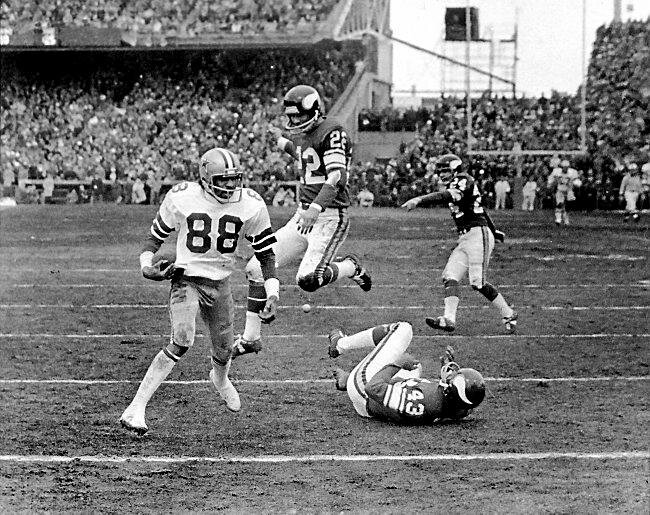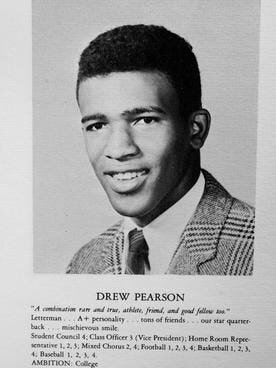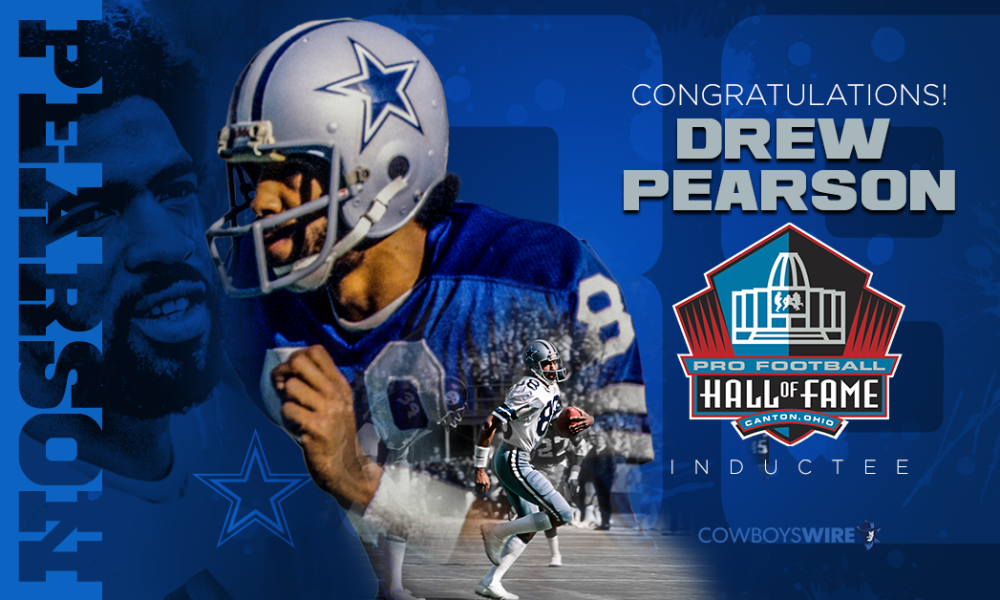On this day in history
No, not this day. THAT day! December 28th
Historically, December 28th has been a consequential day on the calendar. Maybe it has not been the most consequential of all the days, or even in the top 30, but it has enjoyed its moments in the sunshine and the shadow and witnessed its share of significant historical events.
Following is an abbreviated list of December 28th highlights and lowlights:
- December 28, 1065: Westminster Abbey is consecrated in London, England.
- December 28, 1612: Galileo discovers the planet Neptune.
- December 28, 1823: John C. “Crazy Eyes” Calhoun becomes the first Vice President of the United States to resign his post. He does so over differences with President Andrew Jackson. (“Crazy Eyes” is not an official nickname; I just gave it to him nearly two hundred years posthumously.)
- December 28, 1846: Iowa becomes the 29th state of the United States of America. Who knew that would be their crowning achievement? At least they aren’t Oklahoma.
- December 28, 1860: Marks the arrival of Harriet Tubman in Auburn, New York, on her last mission to free slaves, having evaded capture for eight years on the Underground Railroad.
- December 28, 1908: An earthquake strikes Messina, Italy, killing nearly 80,000 people.
- December 28, 1934: The film Bright Eyes premieres. It stars Shirley Temple and features the song, “On the Good Ship Lollipop.”
- December 28, 1954: The Greatest Game Ever Played: The Baltimore Colts win the 26th NFL championship against the New York Giants, 23-17, at Yankee Stadium, in the first-ever sudden-death overtime game in NFL history. Seventeen future members of the Pro Football Hall of Fame were involved in the game.
December 28, 1975
A day that shall live in…
The afternoon of Sunday, December 28, 1975, was a mild winter day in Mineral Wells, Texas. The weather was in the upper 50s. Just three days earlier, Christmas had been cold — in the thirties. We were, however, skunked again. Christmas would be overcast and dreary without a flake of snow. We were left to dream of a white Christmas for yet another year.
On that day, December 28, 1975, I was exactly three months into my 15th trip around the sun, having turned 14 on September 28. I was restless during church that morning. Souls may well have hung in the balance and some may have hung on the words of the preacher, my grandfather, but my mind was 1,014 miles north, in Minneapolis, Minnesota, where the day had broken gray and overcast with snow flurries.
1975 had its disappointments. Sometime between my birthday and the holidays, we went to Arlington, Texas, to visit my Uncle Gerald and Aunt Shannon and their boys, Tommy, Steve, and Terry. Tommy is just a few months younger than me and a lifelong bud the way only a cousin can be.
The trip was fun but a little upsetting to me. Tommy and his brothers wore their hair long and wavy… and stylish. I was not permitted to do that because we were conservative, independent Baptists, and we didn’t wear “hippy” hair. I remember once pointing out to Dad the irony of calling ourselves “independent” Baptists while tenaciously conforming to the strict ideas of all the other “independent” Baptists.
He was not amused.
Another thing that upset me was Lynyrd Skynyrd.
The popular rockabilly band had released a new album in 1975, but the vinyl Cousin Tommy was spinning was the album Second Helping, released the year before. We jammed to Sweet Home Alabama, Don’t Ask Me No Questions, and The Ballad of Curtis Loew.
Worse still, Tommy had a couple of ZZ Top albums. The legendary little band from Texas was tearing up their 1971 classic La Grange all weekend long and just for us.
I say this upset me because I was an independent Baptist boy, and we didn’t let the Devil’s music in our house. So, my album collection began and ended with Charley Pride. I may have had others, but I have forgotten them. If I did have any other albums and they weren’t Southern Gospel greats like The Blackwood Brothers or the Statesmen Quartet, you can bet your sweet ass they were country. If anyone was going to sing about getting drunk and messing around and stuff, they were going to do it the approved Baptist way — with a twang.
No long hair. No rock ’n’ roll. No Christmas snow. What was even the point of being fourteen?!
At least God was smiling down on His favorite football team again that year.
The Dallas Cowboys, who would have played in an enclosed stadium except for the football field-sized hole cut out of the top of Texas Stadium (so God could watch His favorite team play), posted a 10-4 record that year.
On the morning of December 28, while I waited for the final “Amen,” my heroes, the good guys with the star on their helmets, prepared for the divisional round of the playoffs. They were matched against the mighty Minnesota Vikings, with their Purple People-Eatin’ defense and elusive quarterback Fran Tarkenton.
I don’t know if Tom Landry and his troops were nervous. I sure was. Minnesota was led by head coach Bud Grant. He would lead his Vikings to four Super Bowls and lose every one of them. (No! I am not laughing at them; I am laughing with you!) Tarkenton was a feared quarterback. Chuck Foreman was a formidable running back. Defensive Ends Carl Eller and Jim Marshall anchored one of the most ballyhooed defensive lines in league history.
This game would be no picnic. Nor would it be played in picnic weather. Moreover, the rabid, stadium-packing attendees would be anything but kind and accommodating to America’s (and God’s) Team.
They were clearly purple-clad heathen.
A Jersey Boy
Who Would Wear the Good Guys’ Jersey
On January 12, 1951, South River, New Jersey, was a small, sleepy community of fewer than 10,000 souls. That day, however, one vibrant soul was added to their number. He would become a favorite son and one of two famous athletes to come out of the burg. His momma named him Drew.
When he was a freshman in high school, Drew Pearson made the varsity team as a wide receiver, catching passes from future NFL quarterback Joe Theismann. Theismann would go on to win a Super Bowl and be named NFL MVP. He is still waiting for his turn to be inducted into the Pro Football Hall of Fame, an honor that may elude him altogether. If so, it would leave him the only quarterback in NFL history to win both a Super Bowl and an MVP award and not make the Hall.
After Theismann graduated, Pearson, in his sophomore year, was converted to quarterback, a position he played for the rest of his high school career. Pearson also lettered in baseball and basketball before graduating in 1969.
Pearson accepted a scholarship to play quarterback for the University of Tulsa. After starting four games for the Golden Hurricanes as a sophomore, he was switched to wide receiver. Though the school was run-oriented, Pearson managed to lead the team in receptions, yards, and touchdowns as a receiver. He finished his college career with 55 receptions for 1,119 yards, 8 touchdowns, and an impressive 20.3-yard average per reception.
Today, the NFL draft is seven rounds long, with most late-round picks being longshots to make a significant impact. In 1973, the draft lasted a whopping 17 rounds, with 442 players selected. Drew Pearson was not one of them. To play in the NFL, he would have to make it as an undrafted free agent—and that’s exactly what he did.
“In 1973, Drew Pearson was signed as an undrafted free agent by the Dallas Cowboys and initially made the team as a third-string wide receiver, primarily for his contributions on special teams. During his rookie season, Pearson stepped into a starting role after Otto Stowe broke his ankle in the seventh game against the Philadelphia Eagles. Backup Mike Montgomery also sustained an injury the following week. Despite the circumstances, Pearson played in 14 games, starting six of them, and recorded 22 receptions for 388 yards and two touchdowns.
In 1974, after Stowe requested a trade, Pearson became the full-time starter alongside Golden Richards. That season, he led the team with 62 receptions for 1,087 yards and scored two touchdowns. He would continue to lead the Cowboys in receiving until 1978, when Tony Hill emerged as the team’s top wide receiver.
In 1979, Pearson, Hill, and Tony Dorsett made NFL history by becoming the first trio of teammates to each surpass 1,000 yards in a season—two receivers with 1,000-yard seasons and one running back achieving the same feat. Pearson contributed 55 receptions for 1,026 yards and eight touchdowns that year. He and Hill also became the first wide receiver duo in Cowboys history to each surpass 1,000 receiving yards in a single season.
In 1980, Pearson surpassed Bob Hayes as the franchise leader in receptions. That same year, the Cowboys nominated him for the NFL Man of the Year award in recognition of his on-field excellence and off-field contributions.
One of Pearson’s most notable moments came during the 1981 NFC Championship Game against the San Francisco 49ers. In the final moments of the game, he nearly made “The Catch” by Dwight Clark irrelevant. Pearson caught a deep pass from Danny White that would have been a game-winning touchdown if not for 49ers cornerback Eric Wright, who made a last-second horse-collar tackle to stop Pearson just short of field-goal range. The Cowboys fumbled on the next play, sealing the victory for the 49ers and sending them to Super Bowl XVI.
By 1983, Pearson had surpassed Bob Hayes as the Cowboys’ all-time leader in receiving yards.
Tragically, in March 1984, Pearson fell asleep at the wheel of his Dodge Daytona, causing a crash with a parked tractor-trailer. The accident left him with a career-ending liver injury and took the life of his brother, Carey.
Throughout his career, Pearson helped the Cowboys to three Super Bowl appearances, including a victory in Super Bowl XII in 1978. He also scored a touchdown in Super Bowl X.”
December 28, 1975, the Minnesota Vikings were a favorite to make it to the Super Bowl. They enjoyed homefield advantage against the Cowboys. Their defense was fierce. Their quarterback had wizard-like qualities with his mobility and penchant for finding third and fourth options in the passing game. Their running back had completed a dominant 1,000-yard rushing season. Their coach was a recognized tactician.
Coach Grant, Tarkenton, Carl Eller, and Alan Page were future Hall of Famers. This was a team with which one would need to reckon.
The game was a slugfest. Carl Eller and company knocked Cowboys quarterback Roger Staubach around, disrupting his timing, harassing him to no end. The Cowboys’ defense did the same to Tarkenton and bottled up running back Chuck Foreman.
At halftime, the only score on the board was a Vikings’ touchdown, scored from the one-yard line due to a rookie mistake on a punt return. Neither offense managed to break through.
The Cowboys finally mounted a drive in the third quarter to tie the game. The Vikings responded in the fourth quarter by scoring on their only sustained drive of the game. Up just 14-10, thanks to a Toni Fritsch field goal, it appeared for all the world the Vikings would win the game, as predicted.
Drew Pearson had been shut down the entire game. He would finish with just four receptions. But with under two minutes left, on a fourth and sixteen from inside their own 30-yard line, Staubach found Pearson on the sideline at midfield. Pearson made a spectacular catch to give the Cowboys a first down.
There were just 32 seconds on the clock, and the Cowboys were still a half football field from paydirt. The Vikings lined up in a “prevent” defense designed to prevent a long pass completion and to keep everything in front of the defenders. Staubach pump-faked to the left, stepped into the pocket, and unleashed a long pass downfield. Pearson and defender Nate Wright tussled for position. Pearson made an incredible play on the slightly underthrown ball, catching it at his hip, and then danced into the end zone.
Roger Staubach later described his pass as a “Hail Mary.” (Roger is Catholic.) It was a prayer… and Pearson answered it to make it perhaps the signature play in Cowboys history and one of the greatest in NFL history. Since that day, every desperation heave into the end zone at the end of a half or a game is labeled a “Hail Mary.”
Drew Pearson made all four of his catches in the final 1:51 of the game. On that final drive, Staubach completed four passes, all of them to Pearson.
Drew Pearson was inducted into the Dallas Cowboys Ring of Honor in 2011. Like Theismann, however, the Hall of Fame eluded him, despite his being one of the most notable players of his era, a member of the 1970s All-Decade Team, and one of the very best receivers in history. In 2020, Pearson’s best chance of induction arrived. It was the Centennial Celebration of the NFL, and the class was expanded, especially to accommodate “senior” players. Twenty-five senior players received nominations, but only ten made it in. Safety Cliff Harris, a teammate of Pearson’s, made it. Pearson did not. That must have felt like the final nail in the Hall of Fame coffin for the longsuffering legendary receiver.
“What have I done wrong?” Pearson said, according to CBS Dallas Fort Worth. “I played the game, did everything right, represented the Cowboys in every way possible and never brought shame or nothing to the name of the Dallas Cowboys. Played in seven championship games, captain. Take me out of the equation and see how many games they win. At least four they’re gonna lose.”
His pain was palpable. His spirit was broken. His bitterness bubbled like hydrochloric acid on the concrete reality of his inevitable place among the also-rans, the outliers.
This very weekend, however, on the eve of Super Bowl LV, Drew Pearson received the call he had waited decades to get…
“Cowboys legend Drew Pearson, now 70 years old, was a star for the Cowboys from 1973 to 1983. He was a three-time First Team All-Pro, a three-time Pro Bowler, and a Super Bowl Champion. He was also named to the 1970s All-Decade team.
Yet, somehow, he hadn’t been inducted into the Hall of Fame despite it having been literal decades since he’d last played. He’d been snubbed for years. Last year, he was devastated after missing it again—and rightfully so.
This year, that wrong has been corrected. The legendary Cowboys wide receiver will be inducted into the Hall of Fame’s class of 2020.
He was stunned when he found out.”
Drew Pearson wore number 88. The Cowboys do not retire numbers. For Drew, they did the next best thing. They reserved his number for truly special talents. Hall of Famer Michael Irvin would be the next Cowboy to wear it. Then, it was Dez Bryant. Now, it is CeeDee Lamb.
The Jersey boy is now the jersey man and, man, you better bring something special if you want to wear his number.
…of grace and glory!
The Hail Mary that was full of grace and led to glory!
Let me digress.
It is late Sunday afternoon, December 28th, 1975. I have painfully watched the nail-biting, slobber-knocking, frustrating contest play out minute-by-minute, yard-by-yard. Lying on the living room floor, so as to be as close as possible to the Sony Trinitron console color television that is the centerpiece of our modest living room, hands clasped behind my head, I watch and I wait for my Heroes to make their move.
In the next room, behind a closed door, my parents are snoring through another Sunday afternoon nap. My Dad is not a sports fan. He is a fan of Sunday drives and afternoon naps. He just wants an hour or so of peaceful slumber.
With 32 seconds left in the game and the end zone a mile away, my hope has died. I am dealing with the crushing reality that my team will leave the bitter cold of Minnesota in defeat.
Then, it happens. The kind of miracle Sundays are made to celebrate! Roger’s Hail Mary! I shriek with delight, leap to my feet, and run a loop through the house, pumping my fists, celebrating at the top of my lungs.
Dad bursts from his room in a fit, wearing only his Fruit of the Looms and undershirt. “What in the name of…?”
I am in mortal danger and I know it. I am frozen, wide-eyed. Dad looks at me and then the television. He watches the replay of the miracle. He listens to the excited announcers recount what just happened. He doesn’t threaten me. He doesn’t say that I won’t see my fifteenth birthday if I ever wake him like that again and scare him half to death. He doesn’t tell me he thought I had been horribly injured.
He sighs and grins.
“The Cowboys won?”
I nod.
“Well, look outside and make sure you didn’t wake the dead. I would hate to have to deal with irritable corpses today when I didn’t even get my nap out.”
We lived 100 yards or so from an old graveyard, but that’s another story.
This is my Hail Mary story.
I am Baptist, so I don’t do the Hail Mary thing when I pray. I talk straight to Jesus instead. Apparently, no amount of Hail Marys or Baptist prayers will suffice to resurrect the once-proud, once-dominant franchise that became America’s Team. Super Bowl LV is the 24th consecutive Super Bowl without the Dallas Cowboys in it.
Still, I believe Roger Staubach, Drew Pearson, all of Cowboys Nation (Baptist, Catholics, and heathen alike), and I can agree this is a day completely full of grace…and glory.

